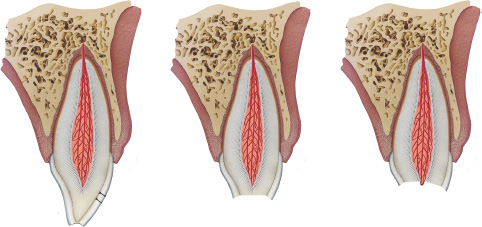Classification of Dental Injuries
OBJECTIVE
1 Recognize injuries involving the various parts of the tooth and supporting structures.
Dental injuries have been classified according to a variety of factors, such as etiology, anatomy, pathology, or therapeutic considerations.17,18 The present classification is based on a system adopted by the World Health Organization (WHO) in its Application of International Classification of Diseases to Dentistry and Stomatology.19 However, for the sake of completeness, it has been necessary to define and classify certain trauma entities that were not included in the WHO system. The following classification includes injuries to the teeth, supporting structures, gingiva and oral mucosa and is based on anatomical, therapeutic and prognostic considerations. This classification can be applied to both the permanent and the primary dentitions. The code number is according to the International Classification of Diseases (1995).19

INJURIES TO THE HARD DENTAL TISSUES AND THE PULP
Enamel infraction (S 02.50). An incomplete fracture (crack) of the enamel without loss of tooth structure.
Enamel fracture (uncomplicated crown fracture) (S 02.50). A fracture confined to the enamel with loss of tooth structure.
Enamel–dentin fracture (uncomplicated crown fracture) (S 02.51). A fracture confined to enamel and dentin with loss of tooth structure.
Stay updated, free dental videos. Join our Telegram channel

VIDEdental - Online dental courses


